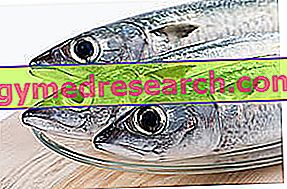Borreliosis
Lyme disease, also known as borreliosis, is a multi-system condition affecting the skin, joints, internal organs and possibly also the nervous system: it is an infection carried by ticks, infected with the spirochete Borrelia burgdorferi .

In the previous discussion we analyzed the mode of transmission of the infection and the symptoms generated; in this article we will focus on diagnosis, therapies and prevention.
Diagnosis
Given the variety of signs and symptoms of Lyme disease, the diagnosis could be particularly difficult: so that completely reliable and standardized serological tests are lacking, and the differential diagnosis is very wide. In fact, immunological blood tests (IFA or ELISA) are not entirely reliable for differential diagnosis.
It has been observed that the response to specific IgM cannot be ascertained before 3-6 months after the onset of the disease, a period clearly too long to undertake an effective therapeutic strategy.
However, among the recent diagnostic tests of Lyme disease - however partially controversial - we recall the chain polymerase reaction, useful for highlighting minimal quantities of nucleic acid of the Borrelia spirochete.
Moreover, many prodromes of the disease are very common among other diseases.
Erythema typical of Lyme disease occurs in approximately 75% of affected patients, so even this sign cannot be considered an exclusive feature of the disease.
In other cases, the typical skin rush is present, but remains completely unnoticed.
A further obstacle to diagnosis is the tick bite: in the vast majority of cases, when the tick adheres to the skin, it tears the man, he tends not to notice since the sting is almost painless.
Fortunately, for patients where Lyme disease is recognized and established, the prognosis is good because it is treated promptly.
Care
To learn more: Drugs for the treatment of Lyme disease
When Lyme disease is correctly diagnosed as soon as possible, the prognosis, as we have seen, is excellent and the patient, in most cases, undergoes an antibiotic treatment directed towards the confirmed infectious agent.
Generally, in milder stages of illness, the patient is treated with Amoxicillin for a period ranging from one to three weeks; in case of allergy to the drug, the therapy is carried out with penicillin or erythromycin.
In case of severity (advanced stage of Lyme disease), antibiotic therapy is associated with corticosteroids.
However, it is important to point out that, in the presence of concurrent skin rash and joint pain, antibiotics can cure the disease, but the pain can remain even for a few weeks or months: in similar situations, the administration of antibiotics is not recommended for periods longer, since the pain, in most affected patients, tends to gradually regress.
Preventing Lyme Disease
A safe vaccine aimed at preventing Lyme disease has not yet been devised; however, the research is carrying out in-depth studies on an experimental vaccine, potentially capable of stimulating the host's immune system (man) to produce antibodies against Borrelia.
Currently, the most effective prevention from Lyme disease is believed to be avoiding tick infections (disease vector), paying particular attention during mountain excursions, areas very infested with ticks. If the subject realizes that he has been bitten by the tick, he must gently remove it with tweezers, taking care not to crush it. After that, it is recommended to thoroughly disinfect the area.
However, in such situations, medical advice is recommended: any early intervention reduces the risk of Lyme disease or, in the event of an infection, the patient is more likely to recover as quickly as possible.
Precautions for Hikers
- It is advisable to wear light-colored clothing in order to better identify ticks
- Use clothing with long sleeves and pants
- The shoes should be high and closed at the ankles
- It is advisable to walk in the middle of the paths, avoiding contact with the vegetation
- Upon returning from an excursion it is necessary to carry out a thorough inspection of the whole body with the help of another person, for areas that are difficult to explore without neglecting the scalp
- Permethrin-based chemical repellents can be used even if their efficacy against ticks is limited.



